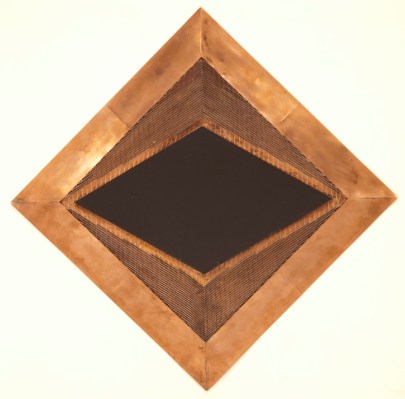Raise your hand if you’ve ever been somewhere you wish you could disappear. You know, just blink right out of existence — push a button on a gadget or whip out an invisibility poncho, say, then make like a magic coin and vanish.
Over the years, you’ve probably heard about various ways to make this happen that don’t involve lucky gift-recipient boy-wizards or whatever the heck it is those cosmic trophy-hunting aliens were using in the campy John McTiernan films. In March, for instance, I wrote about a hydrogen-powered Mercedes car rendered all but invisible by pairing a camera with a cloak of colored lights.
The idea behind the see-through Mercedes involved putting the camera on one side of the vehicle, then draping a blanket of LEDs over the other. The camera transmitted what it was seeing opposite the far side side of the car to the displays on the other — if the cameras picked up an Italian restaurant, say, along with plants, trees and passerby, the LEDs displayed all that in high fidelity on the other side of the car in real time. Looking at the car from the side with the LEDs was thus like looking through it, and the only parts visible were the uncovered wheels.
But that’s a lot of work just to make something only partly disappear.
Another possibility involves using “metamaterials” to fiddle the way light interacts with stuff like our clothes, skin or objects in general — a field of experimental science now referred to as “transformation optics,” focused on controlling light to manipulate the visible world.
Light normally travels in a straight line, but by using specially crafted materials that can warp the electromagnetic spectrum or alter the actual speed of light rays, you can affect the way light interacts with an object, even making it appear to disappear.
In fact it’s already the stuff of science-past: In 2006, researchers at Duke University touted an “invisibility cloak” that deflected microwave beams around a copper cylinder, rendering the cylinder itself almost invisible.
But only almost. You still had visible artifacts — places where light was still reflected around the object’s edges, like glints of light through glass. Partial invisibility is cool (well, cool enough for human-hunting aliens, anyway) but what about rendering something totally invisible? Is it even possible to achieve “perfect” invisibility by manipulating light?
Yes, say Duke researchers Nathan Landy and David R. Smith (Smith was part of the 2006 Duke research team), who just published a study in Nature that claims it’s happened at last — the creation of a “full-parameter unidirectional metamaterial cloak for microwaves.” “Uni-directional” meaning it only works if you’re observing the object from one direction, but “full-parameter” meaning visual bases covered — if you look at the object being masked from the right angle, you can’t see it at all.
How’d they pull it off? For starters, they remedied known imperfections in the cloak’s fabrication process.
“In order to create the first cloaks, many approximations had to be made in order to fabricate the intricate meta-materials used in the device,” explained Landy to Duke Today.
“One issue, which we were fully aware of, was loss of the waves due to reflections at the boundaries of the device.” At the time, says Landy, the goal just to show how cloaking could be accomplished, so they “didn’t worry about these reflections.”
But where the original, simpler cloak used rows of copper-etched fiberglass strips, the new one employs a more complex pattern with full copper strips. That, in short, reduced the number of reflections, in particular at the edges and corners of the metamaterial.
“Each quadrant of the cloak tended to have voids, or blind spots, at their intersections and corners with each other,” said Landy. “After many calculations, we thought we could correct this situation by shifting each strip so that it met its mirror image at each interface.”
And presto, that did the trick.
“We built the cloak, and it worked,” said Landy. “It split light into two waves which traveled around an object in the center and re-emerged as the single wave with minimal loss due to reflections.” The object’s size: a little more than one-third of an inch tall by about three inches in diameter.
So what now? Personal invisibility cloaks for all? Terrifying new tactics in a “friendly” game of paintball? Making the Statue of Liberty disappear without resorting to stage tricks? Maybe not. But Landy notes the research has the potential to extend well beyond invisibility tricks, say creating “straighter” and thus more distance-effective fiber optics by “fixing” bends that can diminish light as it passes through.
And there’s still the problem of only being able to view the invisibility effect from one angle, two-dimensionally. For an invisibility cloak to actually be a cloak, it would have to work in three dimensions — a significantly more difficult problem to solve.
That, according to Landy, is what’s next.


